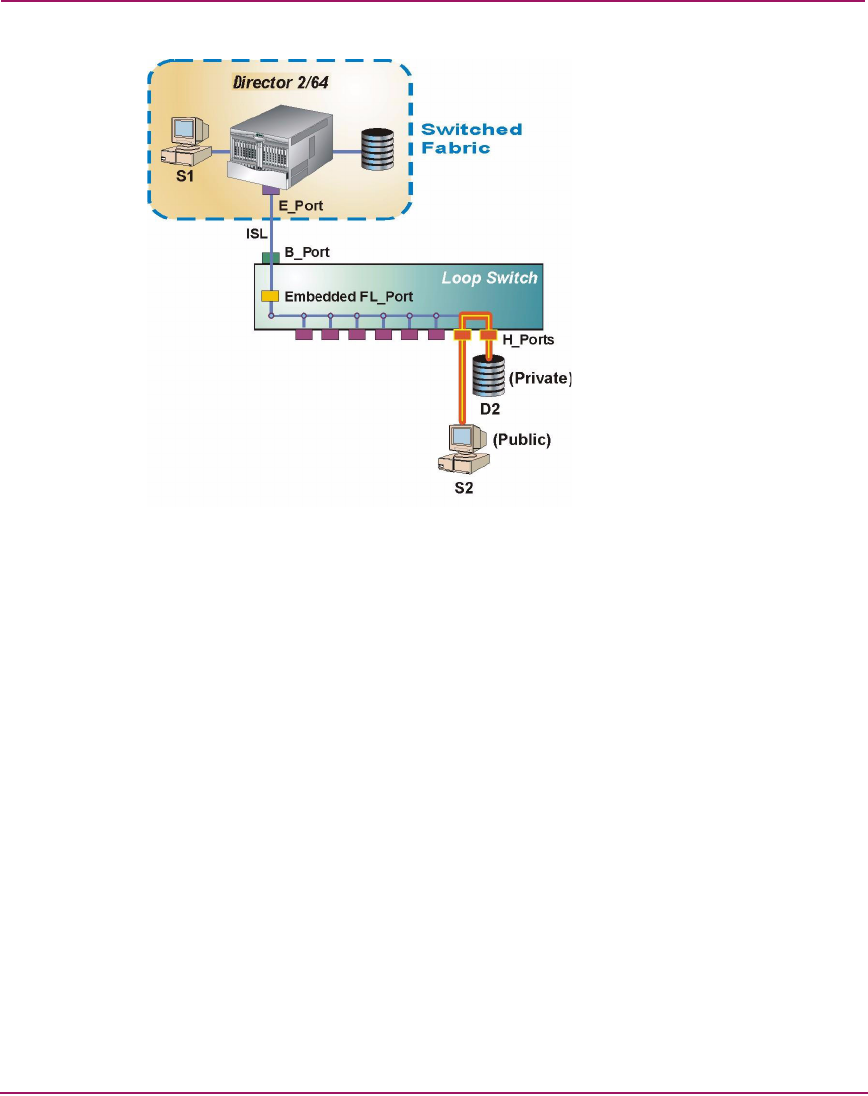FW V06.XX/HAFM SW V08.02.00 HP StorageWorks SAN High Availability Planning Guide (AA-RS2DD-TE, July 2004)
Table Of Contents
- SAN HA Planning Guide
- Contents
- About this Guide
- Introduction to HP Fibre Channel Products
- Product Management
- Planning Considerations for Fibre Channel Topologies
- Fibre Channel Topologies
- Planning for Point-to-Point Connectivity
- Characteristics of Arbitrated Loop Operation
- Planning for Private Arbitrated Loop Connectivity
- Planning for Fabric-Attached Loop Connectivity
- Planning for Multi-Switch Fabric Support
- Fabric Topologies
- Planning a Fibre Channel Fabric Topology
- Fabric Topology Design Considerations
- FICON Cascading
- Physical Planning Considerations
- Port Connectivity and Fiber-Optic Cabling
- HAFM Appliance, LAN, and Remote Access Support
- Inband Management Access (Optional)
- Security Provisions
- Optional Features
- Configuration Planning Tasks
- Task 1: Prepare a Site Plan
- Task 2: Plan Fibre Channel Cable Routing
- Task 3: Consider Interoperability with Fabric Elements and End Devices
- Task 4: Plan Console Management Support
- Task 5: Plan Ethernet Access
- Task 6: Plan Network Addresses
- Task 7: Plan SNMP Support (Optional)
- Task 8: Plan E-Mail Notification (Optional)
- Task 9: Establish Product and HAFM Appliance Security Measures
- Task 10: Plan Phone Connections
- Task 11: Diagram the Planned Configuration
- Task 12: Assign Port Names and Nicknames
- Task 13: Complete the Planning Worksheet
- Task 14: Plan AC Power
- Task 15: Plan a Multi-Switch Fabric (Optional)
- Task 16: Plan Zone Sets for Multiple Products (Optional)
- Index

Planning Considerations for Fibre Channel Topologies
67SAN High Availability Planning Guide
Figure 24: Private device connectivity
Private devices communicate only with other devices on the same arbitrated
loop, and interconnected public and private devices can communicate with
each other. Such intermixed devices establish operating parameters and loop
topology configuration through a port login (PLOGI) command exchange
rather than through the switch’s name server.
Be aware that public device-to-private device communication may cause
problems. For example, it is often critical to separate servers and storage
devices with different operating systems, because accidental transfer of
information from one to another can delete or corrupt data. Plan to implement
security provisions for the switch, such as partitioning attached devices into
restricted-access groups (zoning), providing server-level access control
(persistent binding), or providing storage-level access control. Refer to
“Security Provisions” on page 147 for additional information.
Public Versus Private Loops
Arbitrated loop switches support operation of public and private loops as follows:
■ Public loop — A public loop is connected to a switched fabric (through the
switch B_Port) and the switch has an active embedded FL_Port that is user
transparent. All devices attached to the loop can communicate with each










